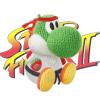Hi Guys,
I'm working on a presentation for my fellow engineers and am trying to gather some info about the usage of curves in graphics and graphical effects. Less about vector graphics type stuff and more about visual effects - but if you have interesting vector graphics info, I'd love to hear that too!
My questions are...
1) What are some interesting techniques involving curves in graphics? (e.g. particle color over their lifetime, uses of curve based color gradients)
2) Do you currently use curves in your graphics work? If so, how are the curves used? Do you use them while making a texture? Do you use them in a fragment shader? How are they passed into the shader - hard coded into the shader? uniform constants? baked out into a texture (if so what dimensions / format)?
Anything else you think I should have asked about? smile emoticon
Thank you!!!









